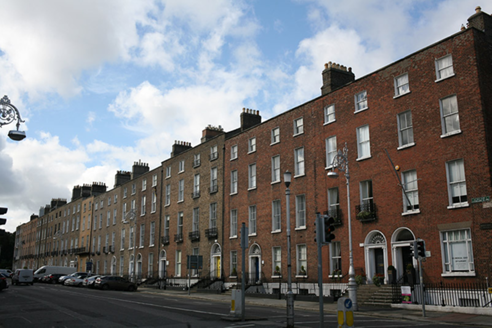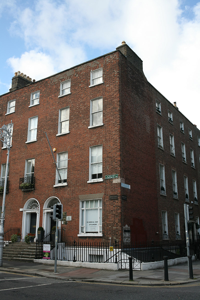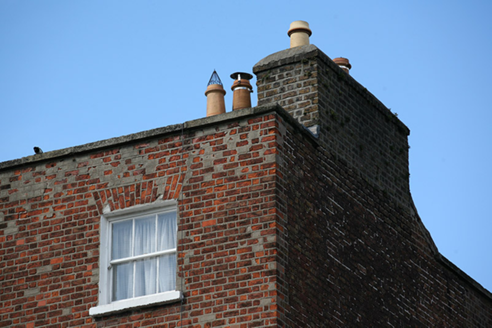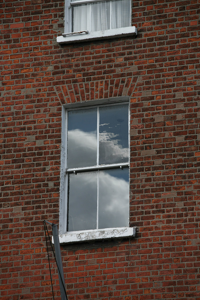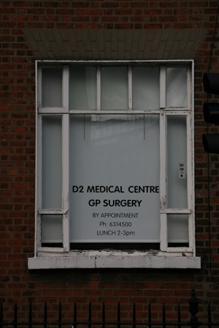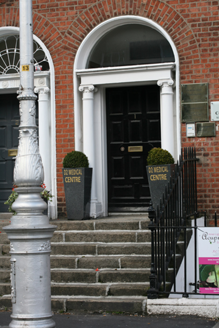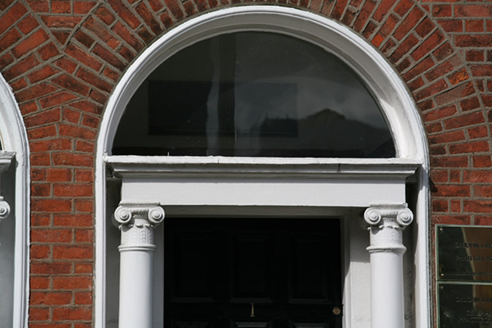Survey Data
Reg No
50930058
Rating
Regional
Categories of Special Interest
Architectural, Artistic
Original Use
House
In Use As
Office
Date
1790 - 1810
Coordinates
316660, 233237
Date Recorded
09/09/2015
Date Updated
--/--/--
Description
Corner-sited end-of-terrace two-bay four-storey over basement former townhouse, built c. 1800, with blank bay to north on Baggot Street Lower. Single-span pitched slate roof set behind parapet wall with granite coping, parapet gutters, brick chimneystack rising from the north side gable having clay and terracotta lipped pots. Red brick walls laid in Flemish bond with cement pointing. Moulded granite plinth course over rendered basement wall. Gauged brick square-headed window openings with feathered reveals, granite sills, and timber sash windows; three-over-three pane to third floor, two-over-two pane to first, second and basement floors with historic glass and multi-pane timber casement window to enlarged opening on ground floor with replacement concrete head. Granite surround to basement window opening, with metal grille affixed. Gauged brick round-headed door opening with painted masonry Ionic doorcase comprising square-headed door opening flanked by Ionic columns supporting plain lintel entablature and plain glazed fanlight. Original timber door with eleven raised-and-fielded panels opening onto shared granite platform and granite steps. Platform and basement enclosed by original wrought- and cast-iron railings set on granite plinth wall with concrete steps providing access to basement. Terminating north end-of-terrace of similarly scaled houses lining west side of Fitzwilliam Street Upper, at the junction of Baggot Street Lower.
Appraisal
A handsome terraced early-nineteenth century former townhouse retaining its original façade composition, except for the ground floor window opening which has been enlarged. The granite dressings contrast with the mellow brick, adding colour and textural interest, while the doorcase forms the decorative focus. The house bookends a long terrace of former residences and successfully resolves the returning of the terrace, and continues to contribute to the coherence of the streetscape in the heart of the south Georgian core.
